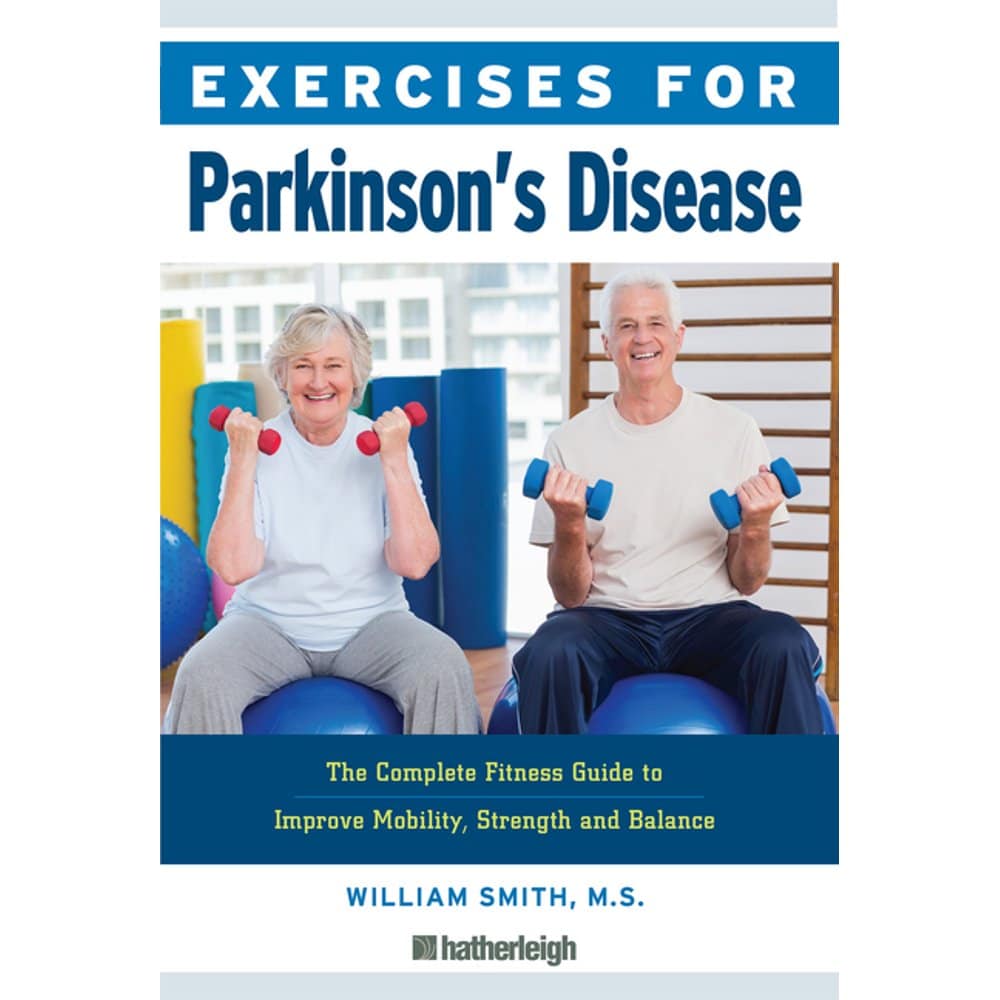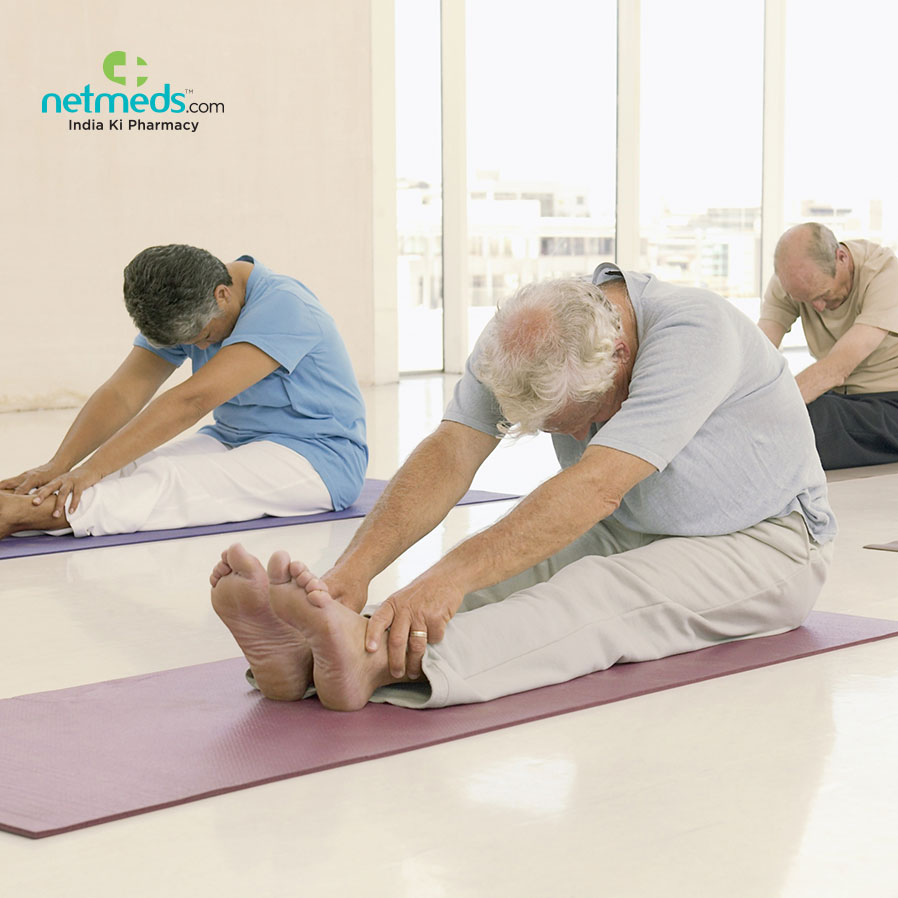Exercise : Pwr Step* Kneeling
STARTING POSITION: Kneeling in front of a chair.
Return to the starting position.Repeat on the other side.Repeat 10 times per side.Rest and perform a second round.
How To Exercise With Parkinsons
Whether you’re a first-time exerciser or a lifelong athlete, the key to working out with Parkinsons is to safely and regularly move your body in a variety of ways. Your fitness regimen should include these four main categories of exercise:
- Aerobic activity
- Balance, agility, and multi-task exercises
People with Parkinsons should strive to perform aerobic activity at least three times weekly and to complete exercises from the other categories two to three times each week.
In total, the Parkinsons Foundation suggests performing 150 minutes of moderate tovigorous exercise weekly.
To help you achieve this goal, try these helpful tips:
- Invest in a treadmill, elliptical, or exercise bike. This will make it convenient to perform aerobic exercise from your home, regardless of the weather.
- Obtain a set of light hand weights from a local exercise shop or thrift store. These can be used for a wide variety of strength training exercises.
- Follow along with one of the many online exercise classes on YouTube that are tailored to people with Parkinsons disease. The Parkinsons Foundation and the Davis Phinney Foundation offer many great online exercise videos.
- Connect with a workout buddy by finding a local Parkinsons support group associated with the American Parkinson Disease Association
What Kind Of Exercise Can I Do If I Have Trouble Standing Or Walking
Even with advanced Parkinsons symptoms, you can still reap the benefits of some activities. If you have trouble walking or balancing, hold a bar or rail to exercise and stretch. If standing or getting up is tough, exercise and stretch in a chair or bed. Physical exercise performed in a seated position, such as biking on a recumbent bike can allow you to exert yourself in a safe manner.
Facial exercises may help combat difficulties speaking or swallowing:
- Chew your food longer and more vigorously.
- Exaggerate your face and lip movements when you speak.
- Make faces in the mirror.
- Sing or read out loud.
Mental exercises give your brain a workout and can improve memory. For example:
- Name as many animals as you can in 1 minute.
- Play brain games and do puzzles.
- Solve math problems in your head.
You can also add activity in small bits throughout your day:
- Park further away from stores so you walk longer distances.
- Stretch or do leg exercises while watching TV.
- Swing your arms more when you walk, and take long strides.
- Take the stairs instead of the elevator.
You May Like: Sam Waterston Tremor
Recommended Reading: Side Effects Of Parkinson’s Meds
Neuroprotective Benefits Of Exercise
Neuroprotection is when your brain works to prevent the death of neurons, or brain cells. For people with PD, exercise is not only vital to maintaining balance, mobility and daily living activities, but it has the potential to have a neuroprotective effect.
The Parkinsons Foundation studied exercise as part of our Parkinsons Outcomes Project study. Our Center of Excellence network believes that exercise is important to good outcomes in PD, and data supports that. Exercising enhances the sense of wellbeing, even across different disease stages and severities.
What Type Of Exercise Should I Do If I Have Parkinson’s Disease

Exercise is a planned, structured, repetitive activity that is intended to improve physical fitness. There is no right exercise for people with Parkinsons. Everyones regimen will differ, depending on overall health, symptoms and previous level of activity. Any exercise helps, and a variety of exercise types may provide well-rounded benefits.
Aerobic exercise
Aerobic exercise involves activities that challenge your cardiorespiratory system such as walking, biking, running, and activities in the pool. Participating in aerobic exercise at least three days a week for 30-40 minutes may slow Parkinsons decline.
Strength training
Strength training involves using your body weight or other tools to build muscle mass and strength. Strength training two days per week, starting with low repetition and weight, may be beneficial in Parkinsons disease. A focus on extensor muscles, or muscles in the back of the body, can help with posture.
Flexibility training
Stretching two or more days per week can be beneficial to maintain range of motion and posture. Holding each stretch of major muscle groups for 30 to 60 seconds can improve muscle length.
Balance and agility training
This type of training often combines aerobic exercise, strength training, and flexibility training. Examples include:
- Tai chi, yoga or Pilates.
You May Like: Joy Milne Parkinson’s Disease
The Basic Elements Of Exercising With Parkinsons
There are four core elements of exercise that are important for people with PD:
Including all four of these elements in your exercise regimen is ideal .
Aerobic activity or high-intensity exercise may be particularly important for Parkinsons and general health
High-intensity exercise has been formally studied in PD with impressive results. The Study in Parkinson Disease of Exercise Phase 2 enrolled 128 people with early PD, who were not yet on dopaminergic medication into three groups:
- a high-intensity treadmill exercise group, in which people exercised at 80-85% of their maximum heart rate
- a moderate-intensity treadmill exercise group, in which people exercised at 60-65% of their maximum heart rate
- a wait-list control group
After six months, the high-intensity group had essentially no change in their motor scores, whereas the control group had a three-point worsening of their motor scores.
Currently, the SPARX3 trial is enrolling participants and underway. This trial is similar to SPARX2, but with a goal of studying many more participants.
Forced exercise
Cognitive challenges in exercise
Tips Before Begin Balancing Exercise For Parkinson People
You May Like: Posture Exercises For Parkinson’s Disease
Re+active Pt Videos For Home Exercising
Cost: Free
re+active has posted to its YouTube channel a few exercise videos, including a seated re+move class , Parkinson’s exercise class , and pole walking .
Cost: Free
This is a series of 66 short videos. There are stretches, warm ups, workouts, fitness challenges, tai chi, and tips & tricks videos. The idea is by the time you’ve followed along with one video in each category, you’ve done a whole body workout.
Cost: Free
Three short videos include quick chair exercises, exercises for stronger legs and glutes, and exercises for better balance.
Cost: $14.95/month or $135/year after a free one week trial
A growing library of workouts for those with Parkinson’s, including: 5-minute workouts, Undefeated Boxing, Rise & Shine morning blast, exercise ball, Brain & Body Bar, and Parkinsons’ workout with towel and ball.
Cost: Free
This collection of pre-recorded exercise videos includes three 20-minute warm up/stretching videos, four 20-minute seated workouts, one 20-minute upper body boxing video, a 9 minute boxing basics video, two one-hour Rock Steady Boxing Winnipeg workouts, two advanced RSBW workouts, and two yoga Parkinson’s workouts.
Cost: Free
Dance For Pd Instructional Dvds/streaming
Cost: vol. 1 DVD $29.99, vol. 2 DVD $59.98, vol. 3 $29.99 DVD, vol. 4 $24.99 stream or download , vol. 1, 2 or 3 streaming $23.99 each, full media bundle $120 .
Each volume is a complete class with movements that draw from ballet, modern dance, tap, jazz and improvisation to create accessible, stimulating dances for all.
Volumes 1 and 3 feature seated and standing dances, and a teacher is always on screen to demonstrate both seated and standing versions. Volume 2 is designed to be done seated. Volume 4 is the first all standing class, but can be equally enjoyed from a chair.
Cost: Free
In early 2019, trained and licensed Dance for PD affiliate, Pamela Lappen, posted a series of twelve 30-minute videos on YouTube using the Dance for PD exercise model. Between March and September 2020, she posted five more exercise videos .
Cost: $39.95 for book/DVD set
This exercise program includes categories such as wake up call, walking and balance, cardiovascular, strength, facial and vocal, and night-time stretching. Suitable for any disease stage, with many levels of difficulty. Designed by certified trainer and orthopedic surgeon with PD.
Cost: $39.95 for book/DVD set
Fifteen chapters are organized by activity of daily living, including getting off the floor, getting out of a car, getting out of bed, freezing, moving about in big crowds, and getting dressed.
Cost: Free
Don’t Miss: Does Parkinson’s Disease Make You Tired
Apda In Your Community
APDAExercise & ParkinsonsWhat types of exercise are best for people with Parkinsons disease?
In last weeks blog, we addressed the reasons why it is vital for people with Parkinsons disease to exercise, including improving particular motor and non-motor symptoms such as impaired balance, gait disorders, depression, and cognition.
Today, we will tackle another important question what types of exercise are most beneficial to help people with Parkinsons disease improve their quality of life? Well also address several specific types of exercise designed for people with PD and some tips on how to get started with an exercise program.
Read Also: What Foods Should Be Avoided When Taking Levodopa
Tips For Getting Started
- First, be safe. Before starting an exercise program, we recommend you to see a physical therapist specializing in Parkinsons for full functional evaluation and recommendations..
- Use a pedometer and figure out how many steps you take on average each day, then build up from there. Many smartphones or smartwatches have a built-in pedometer feature or an application that can be downloaded.
- Exercise indoors and outdoors. Change your routine to stay interested and motivated.
- Again, most importantly pick an exercise you enjoy.
Seek out local PD exercise classes. Across the country, dance classes and boxing groups designed specifically for people with PD are growing in popularity. Contact the Parkinsons Foundations toll-free Helpline at 1-800-4PD-INFO or to find one near you.
Page reviewed by Dr. Bhavana Patel, Movement Disorders Fellow at the University of Florida, a Parkinsons Foundation Center of Excellence.
Don’t Miss: Bbc News Parkinson’s Breakthrough
Try Seated Exercises If You Have Limited Mobility
Performing strength and flexibility exercises while sitting can help you stay fit and improve your range of motion all with minimal stress and wear and tear on your muscles and joints.
An example of a seated stretching routine recommended by the Parkinsons Foundation is the hamstring stretch. To do this stretch:
An example of a strength exercise you can perform while sitting down is the shoulder blade squeeze. To perform this exercise:
Your physical therapist can recommend additional seated exercises.
Which Types Of Exercise Are Best For Parkinsons

It is important to state upfront that there is no one best type of exercise for people with PD. It is most important to choose an exercise regimen that you enjoy, and will continue to do.
However, beyond doing exercise that you will stick with, there are some additional concepts to consider when designing an exercise program for someone with PD.
Don’t Miss: Parkinson’s Support Group Long Island
Static Standing Balance Exercises For Parkinsons
You can start by doing a static standing balance exercise. To start, stand with both feet flat on the floor, with your head and belly button level. Lift your left leg off the floor and hold it there for 30 seconds. Then slowly place it back on the ground and repeat with the opposite leg. You can also add other objects to the exercise, such as a chair or table. Try starting out with 5 repetitions on each side and gradually increasing the number of repetitions.
Dont Miss: Cleveland Clinic Parkinsons Bicycle Study 2017
Moving For Better Balance
Cost: Free
These two instructional videos part I is 10 minutes and part II is 5 minutes are taught by a Jamestown New York YMCA staff member using the Moving for Better Balance approach, an evidence-based fall prevention program.
Cost: Free
This 30-minute video is a personal account by Michael Weiss, a person with Parkinsons. In it he shares stretches, breathing, and physical exercises he has compiled for himself. Exercise demonstration begins 8-minutes into the video and include toe lifts, leg swing, leg lift, knee circles, hip circles, squats, arm stretches, arm twists, shoulder stretches, chair push-ups, bicycle legs, toe touches, chopping wood, conducting, dancing, and facial exercises.
Also Check: How Long Does It Take Parkinsons To Progress
Also Check: Parkinson’s Disease Symptoms List
Meaningful Physical Activity For Those Impacted By Parkinsons Disease
On the Day 2 video of the Upper Midwest Parkinsons Symposium, at timestamp 1:31, you will find a one-hour talk by Dr. Kristin Pickett, PhD. She explains the difference between occupational therapy and physical therapy . She believes those diagnosed with Parkinsons disease should have PT, OT and speech therapy as part of their care team early on. Especially if you hate exercise, you can incorporate physical activity/movement into your everyday tasks. This is what she means by meaningful physical activity.
Home Exercise Program For Parkinsons Patients Handout
To know how he will do so you should keep on reading this post. Home Exercise Program For Parkinsons Patients Handout he will create a treatment plan after evaluating your physical condition extensively. Tests will include examination of your strength posture walking flexibility coordination and balance.
And as we age levels of glutathione in the dopaminergic neurons of the substantia nigra decreases. This appears to hasten cell death and advance the progression of PD. At least 80 percent of the substantia nigra cells Home Exercise Program For Parkinsons Patients Handout are lost before symptoms of Parkinsons disease become apparent.
Parents reported the children also sleptbetter and had improved eye coordination emotional stability andbody temperature stability. Eight additional children four in Taiwan and four in the UnitedStates are expected to receive the experimental treatment Byrnesaid. Additional References Citations. We are high quality suppliers our products such as for oversee buyer. To know more please visits .
Other symptoms vary from patient to patient and may include soft monotonous or slow speech difficulty in swallowing trouble in walking shuffling a change in bowel habits slow urination excessive sweating or drooling. Symptoms often are limited to one side of the body. Diagnosis is sometimes assisted by analysis of the patients handwriting which may show evidence of tremor is typically small and tends to decrease in size with the passage of time.
Recommended Reading: Can Botox Help Parkinson’s
The Potential Neuroprotective Effect Of Exercise
Arguably the most important benefit of exercise if you have Parkinsons disease is its neuroprotective effects. The Parkinsons Foundation defines neuroprotection as defenses against the damage, degeneration, and/or death of neurons, or the cells in your nervous system.
This is important, given that Parkinsons interferes with the neurons in your brain that control body movement.
In fact, the Parkinsons Foundation says that interventions that provide neuroprotective benefits, including exercise, can change the course of Parkinsons disease in other words, slow the progression of symptoms.
Parkinson Society British Columbia Exercise Recordings
Cost: Free
Purchase Info:
Cost: Free
Features thirteen men and women with PD of different ages demonstrating both standard and advanced workout routines with twice-weekly variations. Intro reviews benefits of exercise and keys to success. Exercises were developed by physical therapist expert.
Cost: Free
Archived classes from March 2020 to the present include yoga, shadow boxing, multi-tasking/cognition, strength and coordination cardio, bigger and stronger.
Cost: Free
Four of the videos posted to the PASF YouTube channel are exercise videos. Each is 25 minutes long. Focus of the videos include strength and mobility, balance skills, seated and mat exercises.
Recommended Reading: Items To Help Parkinson’s Patients
Aerobic Exercise Helps You Maintain A Healthy Weight
Aerobic exercise helps keep your heart healthy while helping your body burn calories and maintain a healthy weight. Examples of aerobic exercises include walking, jogging, running, swimming, dancing, water aerobics, chair aerobics, and biking.
The Parkinsons Foundation recommends doing 30 minutes of aerobic exercise a day, five times a week. Your routines are up to you, and you can design them around any physical limitations.
I really encourage my patients to get out into nature, go for a walk in the park with a friend or spend time in the garden, Subramanian notes. Being outside in the sunshine is healthy, as long as you dont get too much sun, and walking or hiking can get your heart rate up. Doing these activities with friends or caregivers is also fun and helps avoid the isolation some people with Parkinsons experience.
Exercise 1 Option : Supermans

STARTING POSITION: Lying flat on your stomach.
Repeat 10 times per side.Rest and repeat for two rounds.
Dont Miss: Judy Woodruff Parkinsons
You May Like: Physical Therapy And Parkinson’s Disease